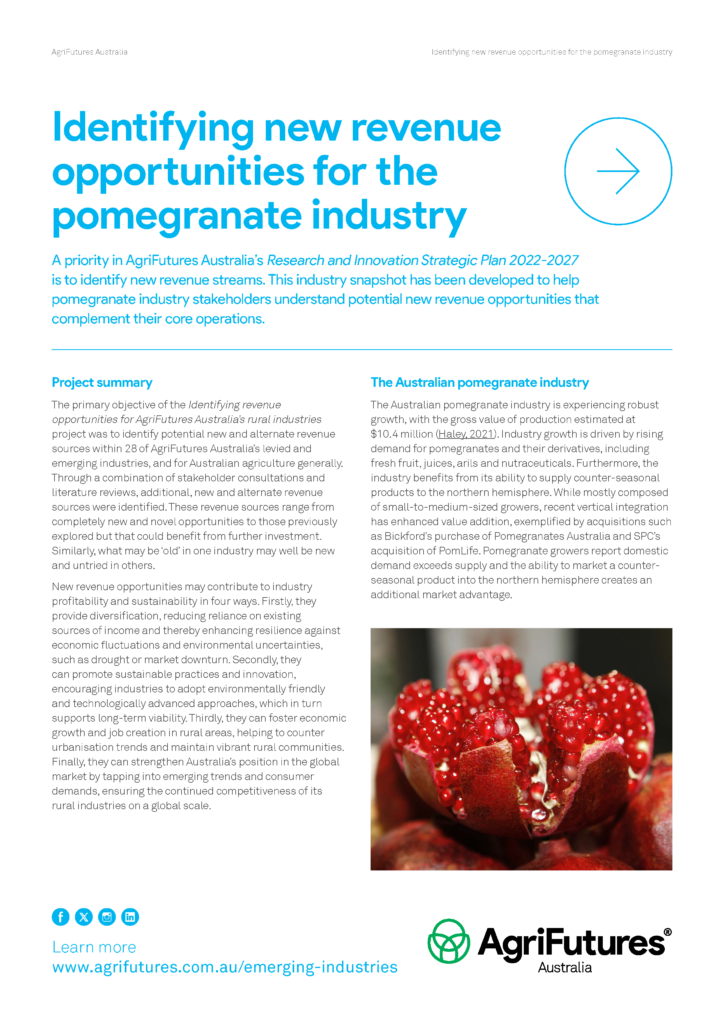Industry placemat: Truffles
This placemat serves as a resource for those interested in the emerging Australian-truffle industry. Within this placemat, you’ll find essential fast facts alongside the fundamental...

1 page
Published: 11 Oct 2024
Author(s): AgriFutures Australia
Download report PDF
DownloadThe primary objective of the Identifying revenue opportunities for AgriFutures Australia’s rural industries project was to identify potential new and alternate revenue sources within 28 of AgriFutures Australia’s levied and emerging industries, and for Australian agriculture generally. Through a combination of stakeholder consultations and literature reviews, additional, new and alternate revenue sources were identified. These revenue sources range from completely new and novel opportunities to those previously explored but that could benefit from further investment. Similarly, what may be ‘old’ in one industry may well be new and untried in others.
New revenue opportunities may contribute to industry profitability and sustainability in four ways. Firstly, they provide diversification, reducing reliance on existing sources of income and thereby enhancing resilience against economic fluctuations and environmental uncertainties, such as drought or market downturn. Secondly, they can promote sustainable practices and innovation, encouraging industries to adopt environmentally friendly and technologically advanced approaches, which in turn supports long-term viability. Thirdly, they can foster economic growth and job creation in rural areas, helping to counter urbanisation trends and maintain vibrant rural communities. Finally, they can strengthen Australia’s position in the global market by tapping into emerging trends and consumer demands, ensuring the continued competitiveness of its rural industries on a global scale.
Industry-specific challenges
Specific insights relating to the Australian pomegranate industry include:
1. There are limited market and consumer profiles to build on three distinct factors that currently underpin consumption of pomegranates: multiculturalism, food consumption trends and health benefits.
2. There is a limited window to supply fresh fruit, extending from late January to May, and supply is usually exhausted by June. Local fruit supply is insufficient for national major chains.
3. As an emerging industry, there are high production risks due to research gaps in plant varieties, a lack of technical support for growers and a lack of coordination across the supply chain.
Industry-specific opportunities
Specific opportunities relating to the Australian pomegranate industry include:
1. Processing waste for value added products. Up to 65% of juice and concentrate processing output is currently wasted, presenting an opportunity to implement value-add economy principles for additional revenue.
2. Developing comprehensive consumer profiles based on multiculturalism, food consumption trends and health benefits. Such profiles will allow tailored marketing strategies to be developed, stimulating industry growth.
3. Improving agronomy, production, harvesting and packing, and exploring mechanisation and automation in other industries. Industry growth could be stimulated by the adoption of technologies that aid irrigation, plant health, micronutrient management, spraying and harvesting. Customised packing processes and improvements to controlled-atmosphere storage could also play a role.